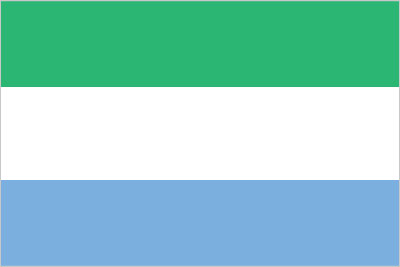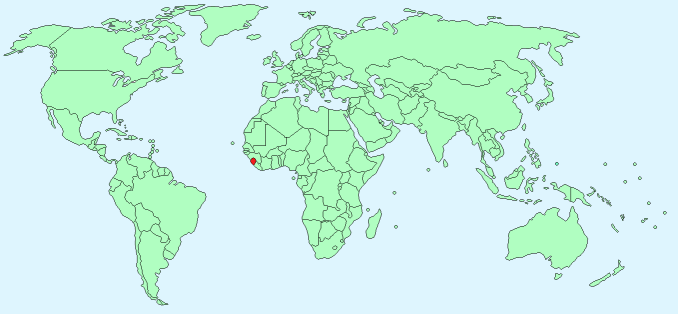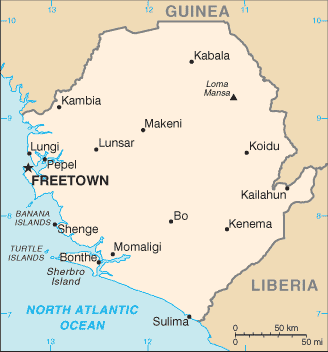Sierra Leone


Continent – Africa
Region – Western Africa
Size – 71,740 km²
Geography – Cosatal swamps with plateau and eastern mountains
Language – English (official), ethnic languages
Religion – Muslim 60%, Christian 10%, indigenous beliefs 30%
Monetary Unit – Sierra Leonean leone
Natural Resources – diamonds, titanium ore, bauxite, iron ore, gold, chromite
Agriculture – rice, coffee, cocoa, palm kernels, palm oil, peanuts; poultry, cattle, sheep, pigs; fish
Industry – diamond mining; iron ore, rutile and bauxite mining; small-scale manufacturing (beverages, textiles, cigarettes, footwear); petroleum refining, small commercial ship repair

Neighbouring Countries – Guinea, Liberia
Population – 5,879,098 (2015 estimate)
Population Growth Rate – 2.35%
Average Life Expectancy – 57.79
Capital City – Freetown (1,007,000)
Highest Mountain – Loma Mansa (1,948m)
Longest River – Moa (425 km)
Climate – Tropical – 24°C to 34°C all year
Yearly Rainfall – 356 cm (approx) mostly June to October
Plant Life – Savanna grassland, mangrove swamp, oil palm, cotton tree, red ironwood tree
Animal Life – crocodiles, hippopotamus, elephant, antelope, monkey, baboon, chimpanzee, leopard, hyena, turtles
Bird Life – emerald cuckoo, Senegal firefinch, common bulbul, little African swift, Didric cuckoo, bronze manakin, cattle egret, African harrier hawk, Savanna sparrow
Harvard Reference for this page:
Heather Y Wheeler. (2015). Sierra Leone. Available: https://www.naturalhistoryonthenet.com/Facts_Figures/Country_Facts/sierra_leone.htm. Last accessed Tuesday, July 19, 2016
Facts and Figures Pages
